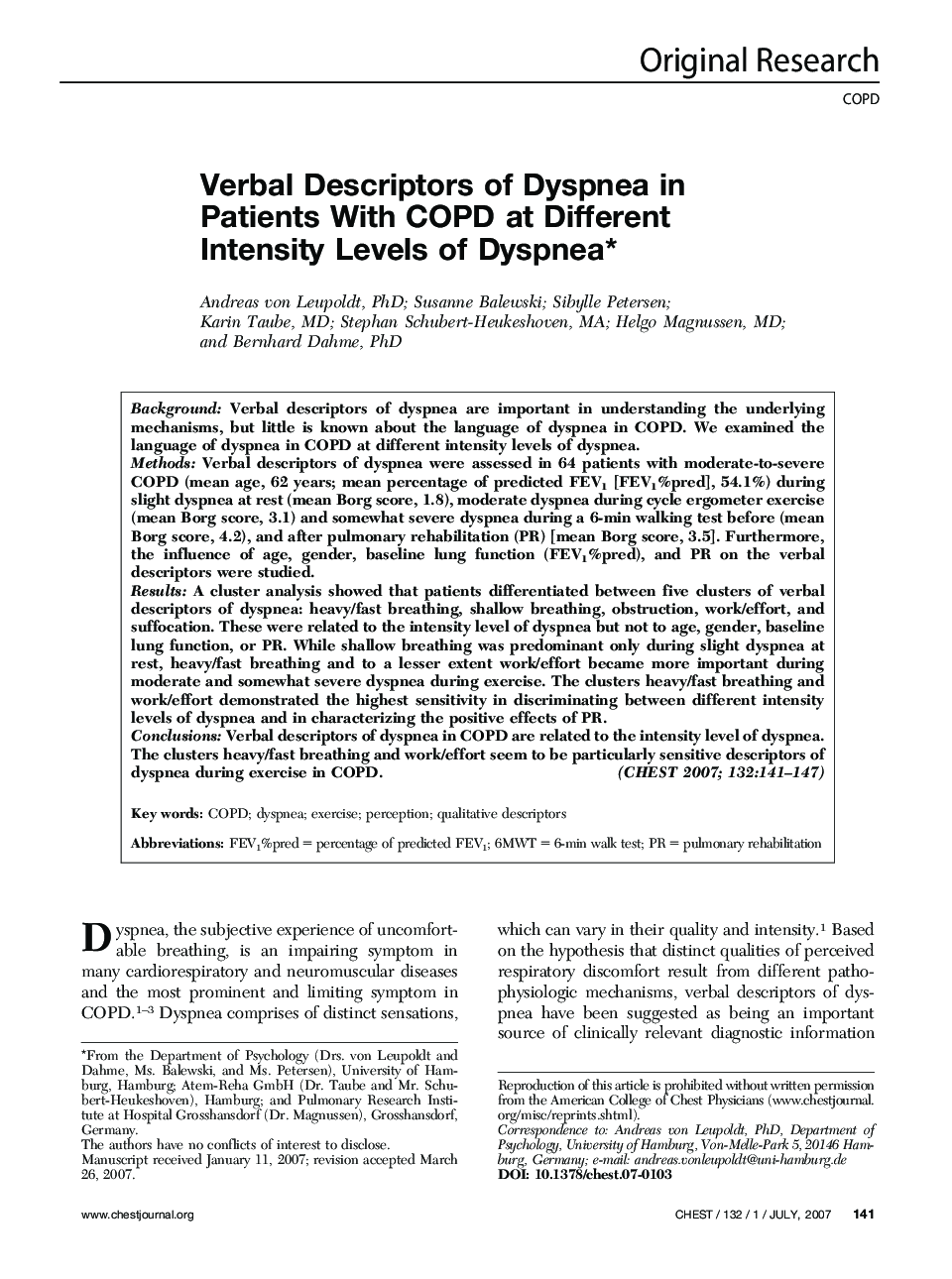| Article ID | Journal | Published Year | Pages | File Type |
|---|---|---|---|---|
| 2906443 | Chest | 2007 | 7 Pages |
Background:Verbal descriptors of dyspnea are important in understanding the underlying mechanisms, but little is known about the language of dyspnea in COPD. We examined the language of dyspnea in COPD at different intensity levels of dyspnea.Methods:Verbal descriptors of dyspnea were assessed in 64 patients with moderate-to-severe COPD (mean age, 62 years; mean percentage of predicted FEV1 [FEV1%pred], 54.1%) during slight dyspnea at rest (mean Borg score, 1.8), moderate dyspnea during cycle ergometer exercise (mean Borg score, 3.1) and somewhat severe dyspnea during a 6-min walking test before (mean Borg score, 4.2), and after pulmonary rehabilitation (PR) [mean Borg score, 3.5]. Furthermore, the influence of age, gender, baseline lung function (FEV1%pred), and PR on the verbal descriptors were studied.Results:A cluster analysis showed that patients differentiated between five clusters of verbal descriptors of dyspnea: heavy/fast breathing, shallow breathing, obstruction, work/effort, and suffocation. These were related to the intensity level of dyspnea but not to age, gender, baseline lung function, or PR. While shallow breathing was predominant only during slight dyspnea at rest, heavy/fast breathing and to a lesser extent work/effort became more important during moderate and somewhat severe dyspnea during exercise. The clusters heavy/fast breathing and work/effort demonstrated the highest sensitivity in discriminating between different intensity levels of dyspnea and in characterizing the positive effects of PR.Conclusions:Verbal descriptors of dyspnea in COPD are related to the intensity level of dyspnea. The clusters heavy/fast breathing and work/effort seem to be particularly sensitive descriptors of dyspnea during exercise in COPD.
